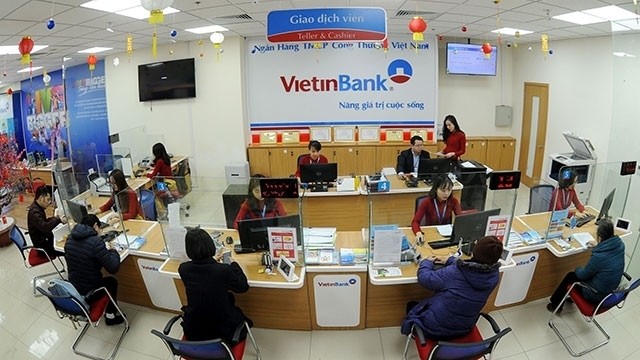Controlling credit, reducing pressure on exchange rates
The State Bank of Vietnam (SBV) has actively and flexibly operated the monetary policy to stabilise the macro economy, curb inflation and support economic growth amid huge challenges and unpredictable economic and political fluctuations in the world in 2018. The average inflation in 2018 continued to be controlled in accordance with the target of below 4%, marking the success in the implementation of the monetary policy of the SBV.
The SBV has governed the interest rate policy in a flexible manner aligned with market movements while maintaining stable interest rates to ensure capital for business and production activities as well as supporting economic growth.
Credit growth was strictly restrained under 16%, with credit priority given to manufacturing, processing, trade and services. With the efforts of the whole banking system, credit for the agricultural and rural sector continued to increase by 14.5% over 2017 (higher than the credit growth of the entire economy), while credit in risky areas was strictly controlled.
In the foreign exchange market, despite a lot of pressure from the international market, the domestic exchange rate remained relatively stable, especially when compared to the level of depreciation of emerging and developing currencies. Market liquidity was ensured while foreign currency transactions took place smoothly. The SBV was also successful in buying a large amount of foreign currency, raising the national foreign exchange reserves to a record of approximately US$64 billion.
The record high in foreign exchange reserves demonstrated the consolidated belief in the policy of the Government and the SBV, contributing to supporting other macroeconomic policies in attracting foreign investment and improving the ability to cope with economic shocks.
In addition to maintaining macroeconomic stability, the restructuring of the banking system and settlement of non-performing loans were also actively implemented. The SBV continued to build and perfect a series of policies and mechanisms to enhance governance and risk management in accordance with Basel II standards.
By the end of 2018, the first two Vietnamese banks, namely VIB and Vietcombank, were allowed to apply minimum capital adequacy ratio requirements following Basel II standards. The non-performing loans of the banking system also decreased sharply and were controlled at 2.16% in 2018.
Actively responding to challenges
In 2019, the Government of Vietnam remains steadfast in its goal of maintaining macroeconomic stability, reforming key economic sectors and renewing the economic growth model in order to achieve the socio-economic development objectives set for the 2016-2020 period.
Thus, the SBV needs to be more active and flexible in implementing its monetary policies in line with other macro policies to maintain the banking system stability.
2019 is assessed as a year of many challenges for the monetary policy in the context of unpredictable domestic and international economic situation. Therefore, monetary policy needs to closely follow financial and monetary market developments and geopolitical situations in the world to develop a suitable scenario.
The biggest challenge forecast by economic experts is the unusual fluctuations from the global financial market raising from the US-China trade war and the monetary tightening anticipated by the US Federal Reserve (FED).
In late 2018, the People’s Bank of China (PBoC) also issued a message of easing monetary policy in the coming years. These are factors that may affect the exchange rates, inflation and Vietnam's interest rates, requiring cautiousness and flexibility from the SBV, particularly regarding interest rate and exchange rate policies.
In addition, the pressure from the Comprehensive and Progressive Trans-Pacific Partnership Agreement (CPTPP) for banks is predicted to grow as foreign investors will participate more deeply and intensely in the domestic economy to compete with domestic banks. This also requires the domestic commercial banks to bolster their internal strength and accelerate restructuring to increase their financial capacity and competitiveness.
The settlement of non-performing loans is no longer a big burden on the banking system, but it is still an important issue for management agencies to consider when carrying out solutions in 2019.
Entering 2019, the SBV should continue to promote the effective implementation of the monetary policy in accordance with other policies to fulfil the economic targets set for 2019.
















